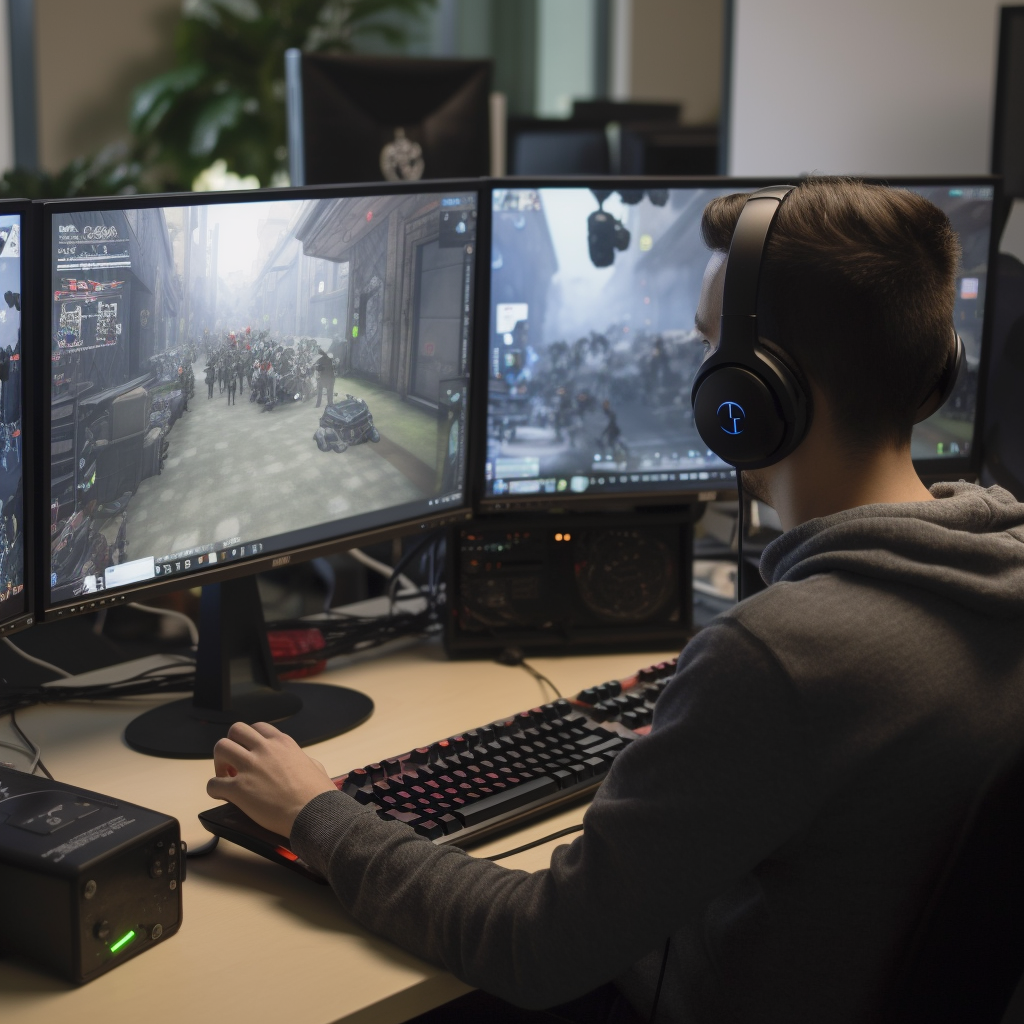Video games have become one of the most popular forms of entertainment in the world, enjoyed by millions of people from all different backgrounds and ages. But there’s still a lot that many don’t know about what it actually takes to make these highly-enjoyed products come to life. Whether you are just starting out in game design or an industry veteran, chances are there may also be some common misconceptions surrounding the video game development process that could disrupt your workflows. In this blog post, we will take a look at some common myths about video game development – what they are and why they can hinder your progress if not clarified early on – as well as delve into actionable steps for kicking off or improving your own video game development journey.
Debunking the Myth of Easy Money – Understanding the Challenges and Costs of Developing a Video Game
Creating a video game is a daunting undertaking that requires extensive knowledge, a strong work ethic, and a determined mindset. The common misconceptions that video game development is an easy path to riches should be quickly dispelled. While the video game industry has seen explosive growth in recent years, developing a game from start to finish is a complex and time-consuming process that comes with its own set of challenges and costs. From navigating legal and copyright issues to designing engaging characters and plot lines, the path to a successful game launch is arduous. However, with the right skills and a strong team, game development can be a rewarding profession that yields not only financial compensation, but also the satisfaction of bringing a virtual world to life. Understanding the realities of game development is the first step toward achieving success in this competitive and ever-changing industry.

There’s No Such Thing as a “Perfect” Video Game – Creating Unique Experiences for Players through Iterative Design
Video games have become a staple in modern entertainment, providing players with unique experiences, unlike any other form of media. However, despite the plethora of games available today, there’s no such thing as a “perfect” video game. Developing a game that will captivate and engage players for hours on end requires a great deal of time, effort, and iterative design. Iterative design involves creating and testing multiple versions of a game to identify what works and what doesn’t. This approach ensures that the final product is tailored to the player’s experience and provides them with a one-of-a-kind experience. It’s this constant pursuit of greatness that pushes developers to create games that are fun, challenging, and worth playing time and time again.
It’s Not All Fun and Games – The Pressure to Create Best-Selling Hits with Limited Resources
Developing a best-selling hit game is no simple feat. In today’s industry, the pressure to create a title that resonates with a vast audience can be overwhelming. Developers and designers are aware that their next release could make or break their career and their company. Add to that the pressure of limited resources, and it’s not all fun and games. Tight deadlines, tight budgets, and strict project scopes are all too common in game development. These constraints challenge developers to work harder and smarter to create a game that stands out in a sea of competitors. Nonetheless, there is a thriving passion for video gaming, and every game that hits the market is a testament to the sheer force of creativity that can arise from working under pressure.
Learning from Mistakes – Adaptability and Innovation is Key in Game Development
In the field of game development, learning from mistakes is crucial for success. Developers must be adaptable and innovative when it comes to creating engaging and rewarding gameplay experiences for players. With new technologies constantly emerging and player preferences changing, developers must be able to adjust their strategies and make quick improvements to their games. Adapting to player feedback and analyzing performance data can help developers to identify areas of improvement and make necessary changes to enhance the overall gaming experience. By constantly striving to innovate and improve, game developers can create games that continue to captivate and excite players for years to come.
Artistry is King – Finding Creative Solutions to Technical Problems in Video Games
Artistry is king in the world of video games, where creativity must constantly contend with technical limitations. Whether it’s designing environments, crafting characters, or inventing gameplay mechanics, game developers must balance their artistic ambitions with the real-world demands of their craft. Yet, it’s precisely this tension between artistry and technology that can lead to some of the most innovative and satisfying gaming experiences. By finding creative solutions to technical problems, game designers can push the boundaries of what’s possible, and create truly immersive worlds that capture the imagination of players. From stunning visual effects to intricate storyline arcs, the artistry of game development is truly unparalleled. So, if you’re looking to dive into the world of gaming, be prepared to embrace the creativity and technical wizardry that makes the industry so compelling.
Working Together to Succeed – The Importance of Collaboration in the Creation of Successful Video Games
Video games have taken the entertainment industry by storm, becoming one of the most profitable sectors in the market. However, at the core of every successful game, there is a team of developers working together to create an immersive experience for the players. Collaboration is key in the game development process, as it allows different experts to combine their talents and skills to achieve a common goal. From game designers and programmers to artists and sound engineers, every member of the team plays an important role in bringing the game to life. Collaborating effectively helps ensure that all aspects of the game, from gameplay mechanics to storylines and graphics, are working together in harmony. Without collaboration, it’s unlikely that a video game will achieve lasting success in the market.
Developing a successful video game takes more than just a creative vision–it requires collaboration, adaptability, and innovation. It’s no secret that the cost of development is high and that market competition can be fierce, so when it comes to making games, it pays to be both persistent and agile. Many developers often have to take a step back and reassess their product with an eye for improvement in order to discern the difference between ‘good and ‘great’. The magic lies in finding the right balance of artistry, technology, and consumer engagement to make something truly special. With dedication, hard work, and a commitment to team synergies, video game developers are surefire candidates for creating unique experiences that gamers of all kinds will love for years to come.




